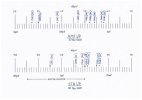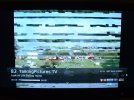Newcoppiceman
Active Member
Our repaired HDR-Fox T2 had been working fine for almost two years until a recording of Mike Read's Heritage Chart Show (Talking Pictures TV, Freeview 82) made at 04:00 on 9 Oct was unwatchable due to picture/sound breakup. At the time this was attributed to co-channel interference due to unusual weather conditions (a problem we've had just once in the previous 10+ years). We're in Woking and get our signal (normally rock-steady on all 7 muxes) from Crystal Palace via a 25dB loft amplifier. (In January I fitted a 700MHz LTE low-pass filter which is now bypassed in case this was a factor - it wasn't.) Usually the PVR works fine but the problem seems to be getting worse and this morning (3 Nov) I gave up trying to listen to Today on Radio 4 the breakup was so bad. Investigations will begin in earnest this weekend (fortunately I have two working spare PVRs); I've already discovered that affected recordings don't have the break-up "recorded-in" as results differ when replaying the same scene. On the one hand this is an unwelcome fault, on the other I'm quite excited as this is another chance to plunder the wonderful resource that is hummy.tv - and probably an opportunity to install the custom firmware. I guess this post ought to be moved to or duplicated in another thread (I won't add further to this one).



